Buxus ball in round container
Ontario_Canada5a_USDA4b
7 years ago
Featured Answer
Sort by:Oldest
Comments (19)
tapla (mid-Michigan, USDA z5b-6a)
7 years agogardengal48 (PNW Z8/9)
7 years agoRelated Discussions
Veggie Varieties for Containers
Comments (9)Susan, You're welcome. You hill up potatoes when they're grown in the ground. When I plant in containers, I partially fill a tall container with soil and plant the potatoes. When the initial stolon emerges above the soil level, I add more soil to the container when the stolon is an inch or two tall. As it keeps growing, I keep adding soil until the soil is as high in the container as it is going to go...maybe 2 or 3" below the top of the container. That's one of the advantages to growing potatoes in containers---no hilling up, just adding soil in a container. Some folks on the vegetable forum have experimented with growing potatoes in bottomless 'frames' or 'trays' they stack on top of an existing soil-filled bed. As the potato plant grows taller, they add another frame and fill it with soil. They haven't had quite the results (tons of potatoes) they've hoped for as the potatoes will not form new potatoes endlessly along the stolons forever. I do not know if they had control plants grown in the ground to compare with the boxes or frames they kept stacking and adding vertically. To me, containers seem simpler than adding stacked boxes or frames. Potatoes make their best growth in our climate early in the season while the soil and air temps are cooler and while rain is (hopefully) falling. Research at Texas A&M University when I lived in Texas showed potatoes make their best growth when temperatures range between 60 and 75 degrees during the day and 45 and 55 degrees at night. We don't stay in that temperature range very long, so early potato planting is critical to success and also is key to getting bumper crops of potatoes. We get way too hot too early to expect amazing potato yields in our climate because once soil temps hit 85 degrees, potato initiation ceases. Our weather is really better-suited to sweet potatoes than regular potatoes. You'll notice that Oklahoma is not a hotbed (pun intended) of commercial potato growers. Dawn...See MoreBox balls question
Comments (1)The way I do mine is to just trim them as much as possible into the shape I want and allow the shrub to fill in the blank spots on it's own. I have a neat one that's about 3 feet tall that I originally grew as a loose trapezoid to get the height and width, and this past spring trimmed up into a pair of stacked balls. (MOL a Boxwood Snowman in the making) It isn't perfectly round yet, but by next year it should be just fine. Other than that, I really only trim twice a year just to maintain a general shape, especially on small shrubs....See MoreMatzo Ball Survey: vote here
Comments (56)The late dh and I differed on the chicken soup - based on our heritage - his Jewish style with a parsnip and mine Italian style with parsley sprigs and a tomato. I surprised him once by making matzo balls. I used the recipe on the matzo meal box and made them about the size of Italian meat balls...had NO idea that they would swell and grow...ended up being HUGE - like baseball size... He commented on how large they were - but ate them and seemed happy. He made them stuffed with a little carmelized onions. They were soooo good. -maria...See MoreRECIPE: Vicky's Cheese Ball (tried and true)
Comments (1)Thank you.......See MoreOntario_Canada5a_USDA4b
7 years agolast modified: 7 years agorina_Ontario,Canada 5a
7 years agoakamainegrower
7 years agoOntario_Canada5a_USDA4b
7 years agoakamainegrower
7 years agotapla (mid-Michigan, USDA z5b-6a)
7 years agoOntario_Canada5a_USDA4b
7 years agoOntario_Canada5a_USDA4b
7 years agolast modified: 7 years agoakamainegrower
7 years agoOntario_Canada5a_USDA4b
7 years agorina_Ontario,Canada 5a
7 years agolast modified: 7 years agotapla (mid-Michigan, USDA z5b-6a)
7 years agolast modified: 7 years agoakamainegrower
7 years agotapla (mid-Michigan, USDA z5b-6a)
7 years agoakamainegrower
7 years agoakamainegrower
7 years ago
Related Stories
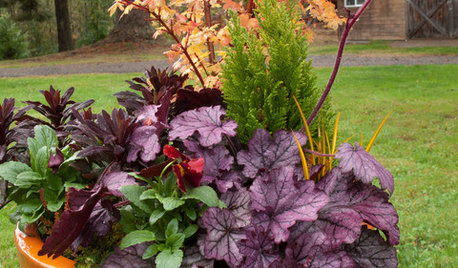
FALL AND THANKSGIVING5 Container Gardens for Fall, the Holidays and Beyond
Make planting easy with a single container, year-round plants and a sprinkling of simple seasonal accents
Full Story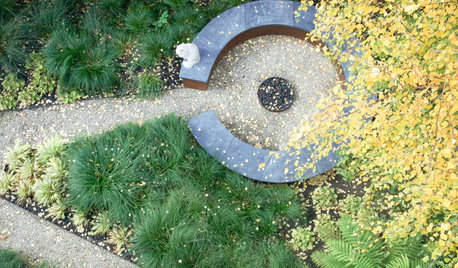
LANDSCAPE DESIGNCircle Round for Great Garden Design
Circular thinking can be a boon in creating eye-catching landscapes. Here's how to put the shape to best use
Full Story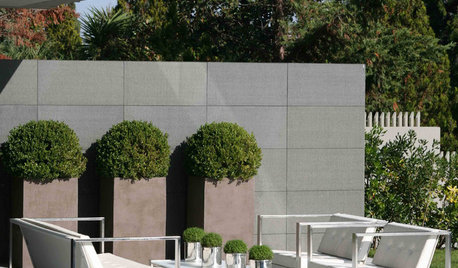
LANDSCAPE DESIGNSimple Container Plantings for Intriguing Garden Design
Beyond mere decoration, thoughtfully chosen pared-down pots and plants can be integral to interest in the garden
Full Story
GARDENING GUIDES7 Fall Beauties for Mild-Climate Container Gardens
We're talking long-term relationship: These showy shrubs will bring color to your container garden autumn after autumn
Full Story
CONTAINER GARDENSContainer Garden Basics: How and When to Water Potted Plants
Confused about soil moisture, the best time to water and what watering device to use? This guide can help
Full Story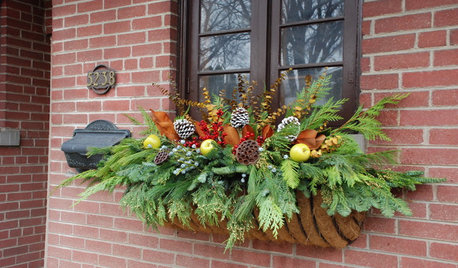
GARDENING GUIDES10 Dazzling Winter Container Designs
Get inspired by these ideas for festive arrangements in outdoor pots and planters
Full Story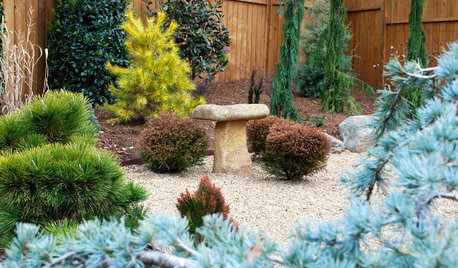
GARDENING GUIDESGreat Design Plant: Thuja Occidentalis ‘Bobozam’
Sculptural, diminutive and low maintenance, Mr. Bowling Ball arborvitae works hard in small spaces
Full Story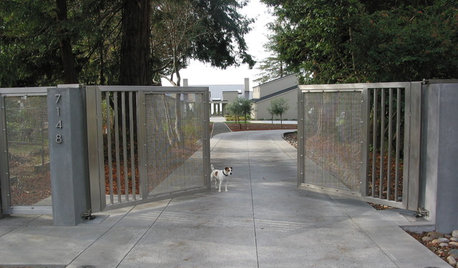
GARDENING AND LANDSCAPINGHouzz Tour: Indoor-Outdoor Harmony Over the Pacific
Landscaping for Wind, Water, Earth, Sky ... and Bocce Ball and Pizza Oven
Full Story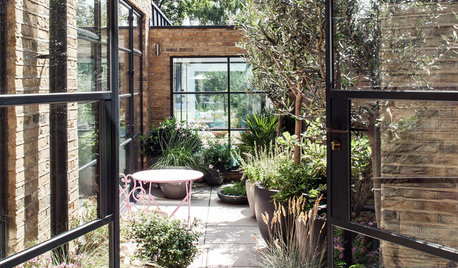
GARDENING GUIDES10 Ideas for Creating an Inviting Courtyard
Design an amazing patio garden for your home with these professional touches
Full Story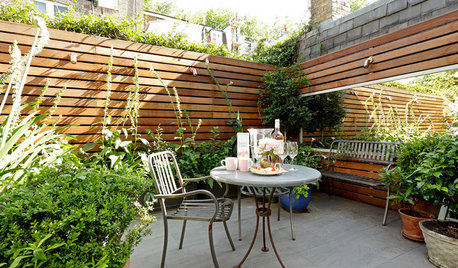
CONTAINER GARDENSPocket Gardens, Pint-Size Patios and Urban Backyards
A compact outdoor space can be a beautiful garden room with the right mix of plantings, furniture and creativity
Full Story





akamainegrower